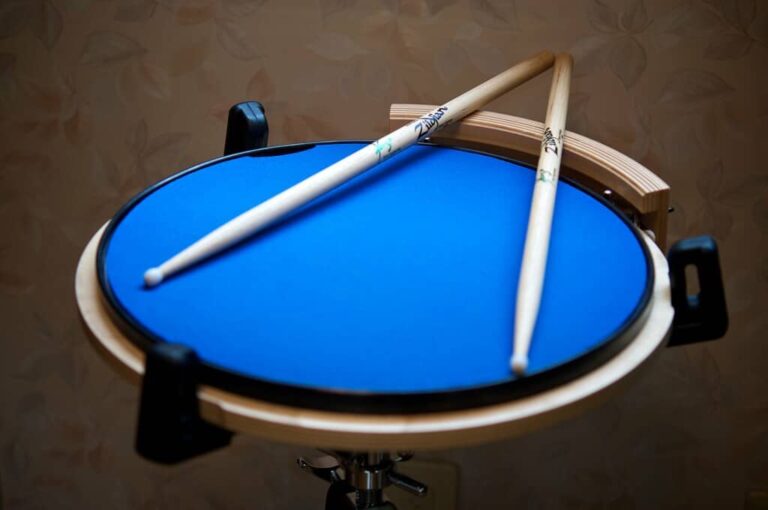Single Paradiddle
A single paradiddle is the one that we’ve been speaking about until now. As we said earlier, one paradiddle would be R L R R or L R L L. When you mix those two stickings together, you’ll get a continuous single paradiddle.
That pattern will look like this:
R L R R L R L L
Double Paradiddle
A double paradiddle is when you play more single strokes than double strokes in the pattern. You’ll first play two single strokes, and then you’ll play a double stroke with one hand. You’ll then flip it around to lead with your other hand for the next section, creating a continuous pattern.
That will look like this:
R L R L R R L R L R L L
Triple Paradiddle
A triple paradiddle is very similar to a double paradiddle, but now you’ll have three sets of single strokes before the double stroke comes.
That will look like this:
R L R L R L R R L R L R L R L L
Paradiddlediddle
A paradiddlediddle is when you switch those stickings around. This time, you’ll have more double strokes than single strokes, giving you a unique version of the rudiment.
Drummers often love playing paradiddlediddles in triplets, but you can play them as straight notes as well.
A paradiddlediddle looks like this:
R L R R L L
Inverted Paradiddle
An inverted paradiddle is when you start a single paradiddle in the middle of the pattern. This one isn’t as commonly played as the others, but it sounds very interesting. You can use it to play some dynamic ideas on the drum kit.
It looks like this:
R L L R L L R L
Flam Paradiddle
A flam paradiddle is when you play a single paradiddle and add a flam on the first note. A flam is when you lightly play one stroke just before your second one lands. Both those strokes count as the same stroke, though.
The flam paradiddle will be written out the same as a single paradiddle, but you’ll get a flam stroke on the first of every four notes.
That will look like this:
lR L R R rL R L L

